Related Flashcards
Cards In This Set
| Front | Back |
|
Drum/wheel farthingale
|
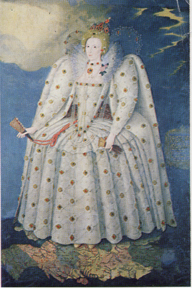 -Northern Renaissance-Princess Elizabeth of Bohemia Think of hoola-hoop. Wear a dress that has very wide sleeves and a bodice with a very long front bc the body should seem elongated. Open ruff at back of neck. Can also wear chopines with this garment bc you want to add as much height as possible, helps fit dimensions. Tried bum-roll but did not work, so that’s why this farthingale worked. |
|
Northern Renaissance Footwear
|
shoes were very wide, leather, some had slashes like the dresses in
sleeves for men and women. Totally opposite from middle age shoes
|
|
Guardinfante
|
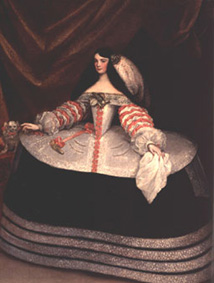 -Court Dress-Northern Renaissance -Very oval in shape-worn by Spanish nobility and the wealthy |
|
Men’s costume 1625-1650 (17th century)
|
-Northern Renaissance
-shirt, doublet, jerkin, trunk hose or breeches. Love lock,
ruff is replaced with falling band, laced or linen. Two facts: items can be fun
facts, like different shoes or hats, etc.
|
|
Love lock
|
-17th century-ponytail brought to the front with a bow at the end
|
|
Virago Sleeve
|
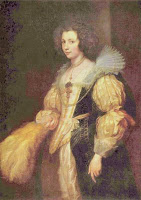 -17th century-Panned sleeve with two puffs, one upper one and one lower one that are separated at the elbow-Precursor to the marie sleeve from the 1800’s |
|
Rhinegraves
|
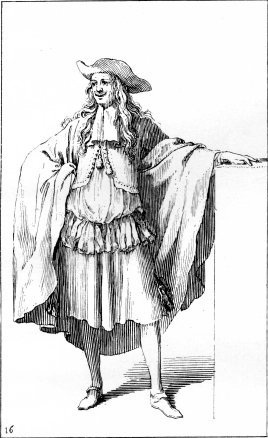 -1650-1680-petticoat breeches gives the illusion of a skirt-ruffles at bottom were called cannon-worn by men |
|
Cravat
|
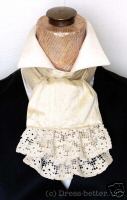 -17th century-worn with perriwig, stockings, breeches-only worn by men -hangs from collar of shirt, way to describe wealth and status |
|
Mantua
|
-gown cut from one piece of fabric-pleated in the back-no waist so it was worn belted-stomachers went over corset to cover it-long from shoulders to floor-17th century
|
|
fontage
|
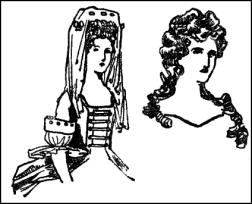 -18th Century wire-structure that has tiers of lace-mistress of the king of france. -gown from silk-Middle Eastern influence |
|
Early-Mid 18th Century Men's
|
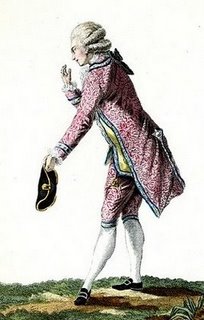 -Underwear at knee-coats on top, knee-length-Waistcoat-Breeches-Stockings-Banyan |
|
Banyan
|
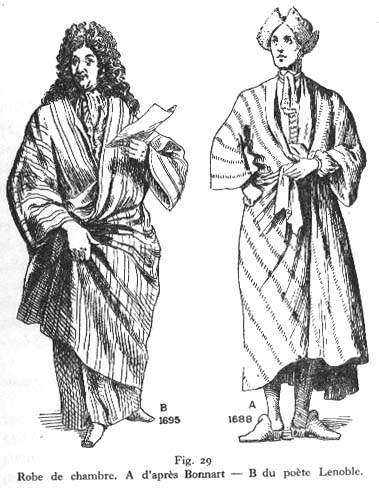 -18th century-leisure, informal, at home wear-high end silk or calico cotton-also called Indian gown |
|
Stomacher
|
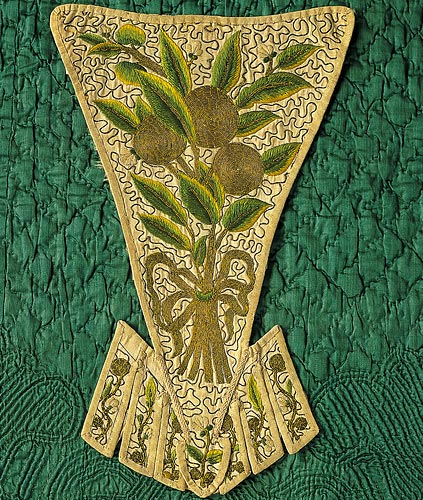 -18th century-for gowns and items that were open in the front so it would not look ugly-12 inches high-eschelles: the more rows of bows, the better |
|
Pannier
|
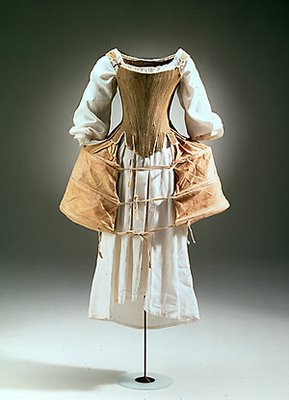 -18th century-understructure-related to garden-fante-panier means basket so material could be wicker like a basket-provides side to side support for robe a la francaise and robe a l'anglaise-as hoops go down it gets wider |
|
Robe Volante
|
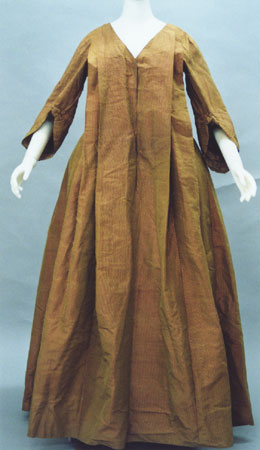 -Early 1700's-Also known as sacque dress-Unbelted and closed in the front-undressed/relaxed look after the death Louis the 14th-not extremely high-end even if it could be made of silk |



